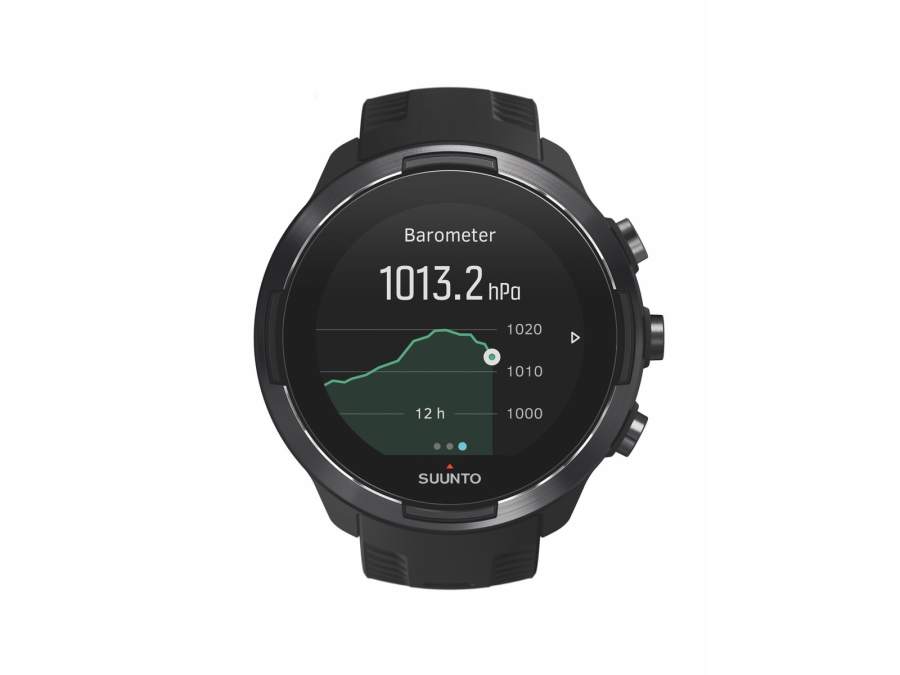Alex Roddie reviews a good all-round smart watch for outdoor use, with highly accurate sensors and long battery life
This review is part of our smartwatches gear guide, and was first published in the January 2019 issue of The Great Outdoors.
Note: this watch has received several firmware updates since it was originally reviewed. These updates have led to an improvement in features and customisation options. The review and star ratings have been updated accordingly.
Quality and comfort
This is a well-made watch, water-resistant to 100m and built like a tank. It’s also chunky and feels quite heavy on the wrist. The buttons are large and responsive. The strap is thick rubber and is long enough to fit over a glove for most people. It has a touchscreen made from toughened sapphire glass.
Ease of use
The Suunto 9 Baro does the basics well: activity tracking, step counting, heart rate, altitude and barometer, GPS track recording. The main interface is simple and easy to learn. However, the default exercise tracking screen is poor for hillwalking and backpacking and must be customised to get the most use out of it (which has some learning curve!)
Customisation options
Power management for track recording can be extensively tweaked and gives an accurate estimate of remaining battery life – far more accurate than battery life estimates on some competing products. Most of the main menu items are fixed and can’t be removed or re-ordered, although the main menu is not actually shown while GPS is active. Extensive customisation of the ‘sport modes’ is possible, although this takes time and can be quite frustrating thanks to the less-than-intuitive smartphone app. There are also some limitations to user-created modes, such as being limited to four watch screens (built-in modes can use up to eight). If desired, the touchscreen can be disabled and the watch operated entirely by buttons when in hiking mode.
The watch comes with eight different watch faces installed. Overall it is not as customisable as competing watches from Garmin.
Accuracy
GPS accuracy is extremely good in ‘performance’ mode. In battery-saving modes, the watch attempts to fill in gaps in the GPS data with the other sensors, but this only works when the watch is in ‘running’ mode – it was found to be ineffective when hiking. Nevertheless, battery life is an excellent 34 hours in ‘performance’ mode with the heart-rate monitor turned off, so battery saving is rarely necessary. If you need the heart-rate monitor, you get 25 hours, which is still good.
All other sensors were found to be extremely accurate, especially the self-calibrating altimeter, which was significantly more accurate than that of the Garmin Fenix 5 Plus. The barometer is also very accurate, and a handy thing to have in the hills – although, frustratingly, the barometer function is not accessible when the watch is in GPS tracking mode. You can only access it from the main menu when you aren’t recording an activity.
Conclusion
Although this watch is aimed at mountain running and other high-octane sports, and is less optimised for walking out of the box, it can be customised to make a highly competent hiking and backpacking watch. It has extremely accurate sensors and all the basic features you’d expect. If you don’t need mapping and value long battery life then the 9 Baro is worth considering, especially if you’re also a runner or cyclist.
The app situation remains confusing as of early 2019, though – Suunto are in the process of migrating from their old Movescount platform to the new Suunto app, and customer confusion is likely until the migration process is complete. The watch is also expensive.








